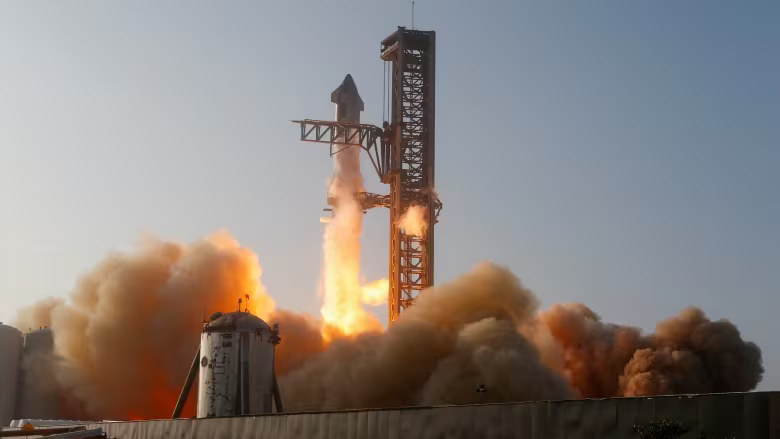On Thursday morning, SpaceX’s Starship rocket took off, marking a significant milestone in space exploration. While some may call the launch a failure, others believe it was a huge success. The rocket had to overcome several technical problems that ultimately led to the explosion of the Super Heavy first stage. However, the success lies in the fact that SpaceX’s development process is much faster than traditional methods.
SpaceX’s approach is messy, but it’s also more efficient. The company can afford to fail, as it has already built three more Super Heavy rockets ready to fly. In contrast, NASA took billions of dollars and a decade to construct the Space Launch System rocket, which had a near-flawless debut flight. If the first five Super Heavy rockets fail, but the next five succeed, which is a better outcome?
One could sit in meetings for ages and discuss everything that could go wrong with a rocket of this size, with an unprecedented number of first-stage engines. The alternative is to get the rocket into a “good enough” configuration and go fly. The ultimate test is flying, which provides the best data. The company’s engineers can identify what is wrong and then go and fix it, without having to worry about theoretical failures.
The explosion of the Super Heavy first stage is not a reason to be pessimistic. Instead, it provides SpaceX with valuable data on how to improve the rocket’s design, particularly the Raptor rocket engine, which powers both the Super Heavy and the Starship upper stage. The company has already rapidly iterated on the engine’s design, and with ample data on the engine’s performance in flight, it will likely continue to improve it.

Another issue that needs to be addressed is the ground infrastructure that fuels and supports the Super Heavy rocket before liftoff. Post-launch imagery showed a massive crater underneath the Orbital Launch Mount, and there were also concerns with the propellant “farm” that stores gases and liquids needed for the rocket. SpaceX will have to make some hard decisions about whether it needs to build a flame trench underneath the rocket or whether an upgraded water deluge system can handle the vehicle’s immense thrust.
SpaceX’s innovative approach has several advantages over traditional methods. The company’s process is much faster, enabling it to build and test rockets at a more rapid pace. SpaceX can build ten Super Heavy first stages in the time it takes NASA to build a single SLS rocket. This approach allows SpaceX to “fail” and learn quickly, making iterative design improvements as needed.
Still early in analysis, but the force of the engines when they throttled up may have shattered the concrete, rather than simply eroding it. The engines were only at half thrust for the static fire test.
— Elon Musk (@elonmusk) April 22, 2023
The Starship test flight is a huge success because it provides SpaceX with valuable data that will enable the company to continue improving its rocket design. While it may be disappointing to see a rocket explode, SpaceX’s engineers will learn from this experience and make the necessary improvements. Soon, the company will be launching and landing a dozen or more Super Heavy rockets, while NASA’s approach allows it a single launch a year.
In conclusion, SpaceX’s Starship test flight was a significant milestone in space exploration. The company’s innovative approach to rocket development is much faster than traditional methods, enabling it to build and test rockets more rapidly. While some may call the test flight a failure, it provides valuable data that will enable the company to improve its rocket design. SpaceX’s success will pave the way for faster and more cost-effective space exploration in the future.
Found this article interesting? Follow us on Twitter and Linkedin to read more exclusive content we post.





